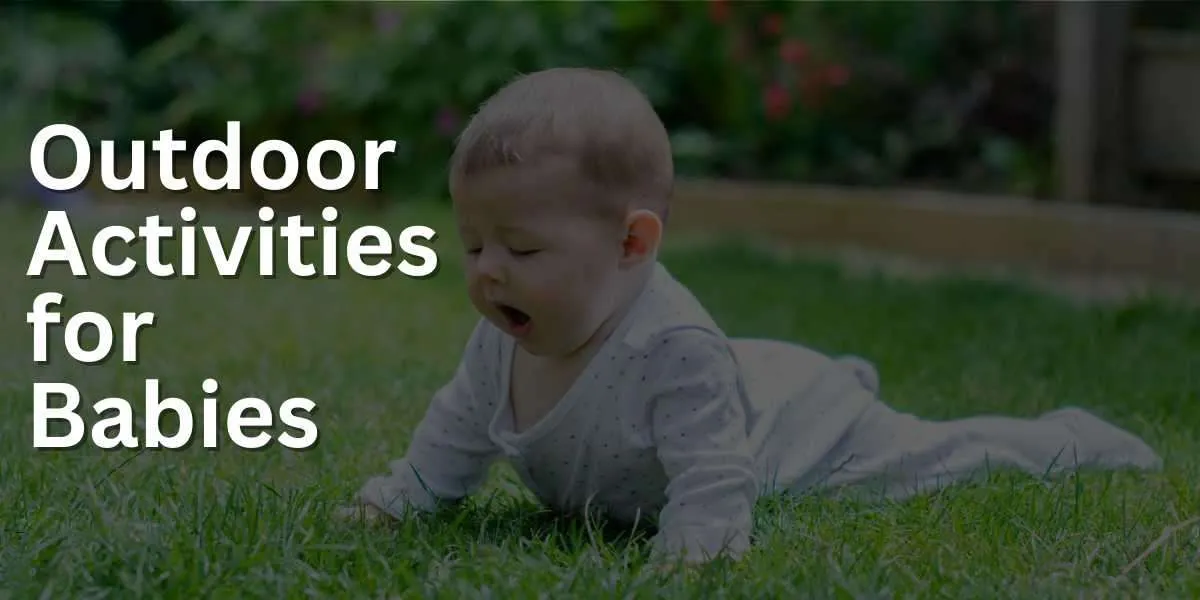Guide to outdoor activities for babies offers nature’s embrace at the earliest stages of life. In the bustling rhythm of modern parenting, the outdoors can sometimes be an overlooked avenue for baby adventures.
If you’ve wondered how to safely introduce your little one to the great outdoors, your journey begins here.
Harnessing insights from baby development and outdoor education, I’ve designed a guide brimming with baby-friendly escapades.
Embark on this exploration with me, and let’s lay the foundation for a lifelong bond between your baby and nature’s wonders.
Incorporating outdoor play into daily routines can thus provide holistic benefits, contributing to physical, mental, and emotional well-being. It’s an essential aspect of childhood and offers lasting benefits that can carry into adulthood.
Key Takeaways: Benefits of Outdoor Play
- Physical health and development: Outdoor play promotes physical activity, which can help build strong bones and muscles, improve cardiovascular health, and reduce the risk of obesity.
- Mental well-being: Being outdoors can reduce stress and anxiety. Natural settings have been shown to have calming effects, promoting relaxation and reducing the symptoms of stress and depression.
- Social skills: Playing outdoors often involves group activities, helping children develop social skills like communication, cooperation, and conflict resolution.
- Cognitive development: Outdoor environments stimulate creativity and problem-solving skills. Navigating uneven terrains, for instance, requires spatial awareness and judgment.
- Vitamin D exposure: Sunlight is a natural source of Vitamin D, essential for bone health, immune function, and mood regulation.
- Connection with nature: Regular outdoor play fosters a love for the environment and an understanding of nature, wildlife, and ecosystems.
- Improved concentration: Time spent outdoors has been linked to better focus and attention spans. The natural setting can help reduce symptoms of ADHD in some children.
- Enhanced sensory skills: The outdoors offers a variety of sensory experiences, helping children develop their senses of sight, hearing, smell, touch, and even taste.
- Risk-taking and resilience: Outdoor play provides opportunities for safe risk-taking, teaching children about boundaries, building their confidence, and enhancing their resilience.
- Immune system boost: Regular exposure to the outdoors can strengthen the immune system, reducing susceptibility to allergies and illnesses.
The Benefits of Outdoor Play for Babies
The world outside is not just a playground but also a vast classroom. Infants, with their innate curiosity, are little explorers eager to understand this expansive environment. The key benefits of outdoor play include the following:
| Benefit Category | Description |
|---|---|
| Physical Development | – Motor Skills: Helps in developing gross motor skills as babies learn to crawl, walk, and explore. – Sensory Development: Offers diverse sensory experiences through touch, sight, sound, and smell. – Hand-Eye Coordination: Engaging with outdoor objects helps improve hand-eye coordination. |
| Cognitive Development | – Exploration and Curiosity: Stimulates natural curiosity and encourages babies to explore their environment. – Spatial Awareness: Helps in developing spatial awareness as babies navigate through different outdoor spaces. – Problem-Solving: Provides opportunities for problem-solving, like maneuvering around obstacles. |
| Social Skills | – Social Interaction: Encourages social interaction with other babies, children, and adults. – Imitation: Babies can learn by imitating actions of others, enhancing their learning experience. |
| Emotional Well-being | – Stress Reduction: Fresh air and natural settings can help in reducing stress and promoting a sense of well-being. – Bonding: Outdoor play can foster bonding with parents, caregivers, and other children. |
| Sensory Stimulation | – Multi-Sensory Experiences: Provides a rich array of sensory experiences which are crucial for a baby’s development. – Sensory Integration: Aids in the integration of sensory information as babies engage with the outdoor environment. |
| Nature Appreciation | – Nature Exposure: Early exposure to nature helps foster an appreciation and love for the natural environment. – Environmental Awareness: Instills a basic awareness of the outdoor environment. |
| Health Benefits | – Vitamin D Exposure: Sunlight is a natural source of Vitamin D which is important for bone health and immune system function. – Fresh Air: Provides babies with fresh air, which is often cleaner and healthier than indoor air. |
| Language Development | – Vocabulary: Exposure to different outdoor settings and objects can help in building a baby’s vocabulary. – Communication Skills: Int |
Cognitive and Sensory Growth from Nature’s Palette
Every rustling leaf or splashing puddle offers infants a sensory-rich experience. Outdoor play stimulates their senses in diverse ways, nurturing cognitive development.
The varied textures of grass, sand, or pebbles under their tiny fingers or the plethora of sounds from chirping crickets to distant car horns all contribute to their sensory perception.
Each interaction is like a puzzle piece, helping infants make sense of the world around them. According to multiple studies, including a University of Missouri-Kansas study, outdoor play helps improve brain development, mood enhancement, sleep patterns, and more.
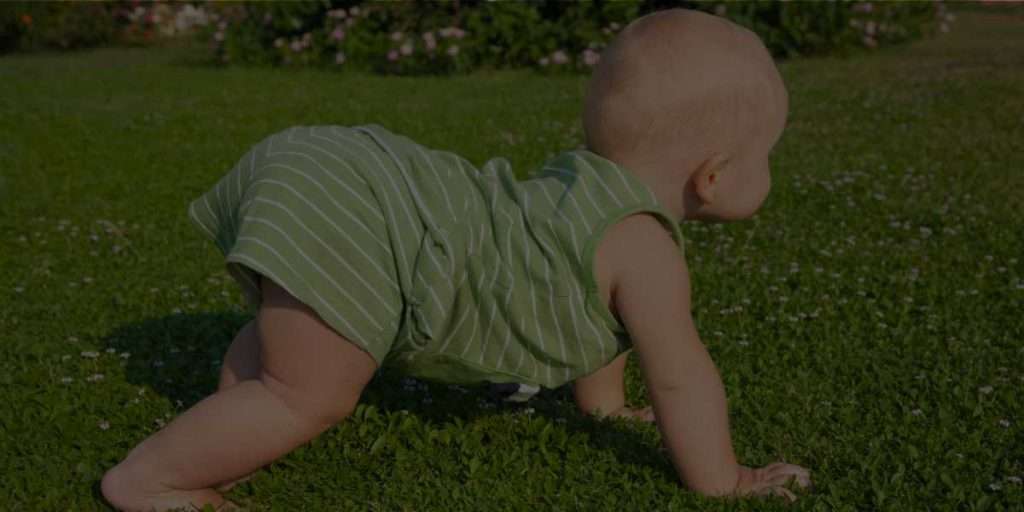
Physical Health and the Great Outdoors
The physical benefits of outdoor play are manifold. Sunlight is a natural source of Vitamin D, essential for bone health and a robust immune system.
Infants who spend time outdoors engage in more physical activity, promoting muscle development and coordination. The expansive environment encourages them to crawl, toddle, and eventually run, providing ample opportunity for gross motor skill development.
According to Children’s Hospital of Philadelphia, the outdoors is safer for children to play compared to indoor environments, reducing the risk of injury. Fresh air, green spaces, and ample room to explore all make the outdoors ideal for physical growth and well-being.
Carlos, father to 1-year-old Miguel: “Miguel took his first steps in our backyard! Being outside made him so eager to explore, and I genuinely believe it accelerated his motor skills. Those little adventures in our garden are memories I’ll cherish forever.”
Mood Enhancement and the Power of Nature
Nature has a calming influence, a fact true for adults and infants alike. The serenity of nature, the gentle sounds, and the abundance of colors uplift mood.
An infant’s laughter as they experience the sensation of sand between their toes or their wide-eyed wonder at the sight of a rainbow are testaments to this.
Harvard Health points out that children who spend more time outdoors have a lower risk of developing mood disorders. Combining physical activity, exposure to natural light, and the freedom to explore enhances emotional well-being.

Sleep Patterns and Outdoor Activities
One of the unsung benefits of outdoor adventures is improved sleep for infants. The combination of physical activity, fresh air, and sensory stimulation can tire out even the most energetic of infants, leading to deeper and more restful sleep.
The University of California San Francisco elaborates on how outdoor play influences the sleep-wake cycle, making nap times and bedtimes easier endeavors for parents.
Outdoor escapades, big or small, can work wonders on resetting an infant’s internal clock, ensuring they get the rest they need for their growth and development.
Jane, mother of 8-month-old Leah: “Ever since we started our daily garden strolls, Leah has been calmer and more receptive to her surroundings. Her sleep has improved, and she giggles whenever she feels the breeze. The outdoors has truly been therapeutic for her.”
Enhancing Social Skills Through Interaction
Outdoor environments often introduce infants to a more social setting than the confines of a home.
Whether it’s a playdate at the park or a casual meet-up with other parents and their kids, these interactions help infants learn the basics of social skills. They begin to understand the concepts of sharing, taking turns, and even early forms of communication through gestures and expressions.
Playgrounds and parks become venues where they can observe and interact with diverse peers, laying the foundation for essential social competencies.
Boosting Imagination and Creativity
The unstructured nature of outdoor play is a blessing for an infant’s imagination. With the sky as the limit, every outdoor excursion becomes an adventure.
A simple mound of sand can transform into a majestic mountain, a puddle becomes a vast ocean, and a twig can turn into a magic wand.
With its unpredictable and ever-changing scenarios, nature offers endless opportunities for imaginative play, encouraging babies to think outside the box and cultivate creativity.
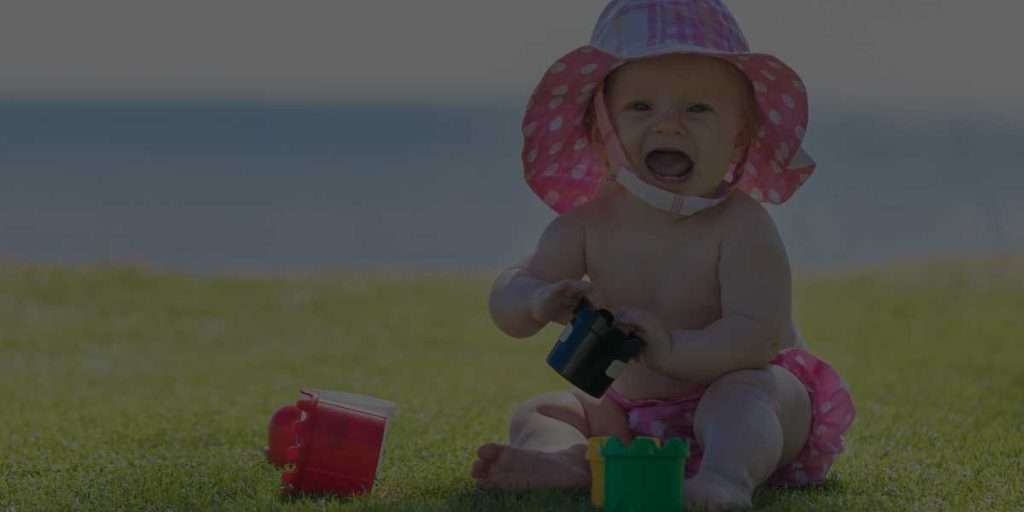
Developing Environmental Awareness
While infants may not yet grasp the vastness of the world or the intricacies of the environment, early exposure to nature plants the seeds of environmental consciousness.
Watching a flower bloom, observing the change of seasons, or feeling the rain on their skin provides them with firsthand experiences of nature’s wonders.
These early connections with the environment can foster a lifelong appreciation and respect for nature, making them more attuned to the importance of sustainability and conservation in the future.
Building Resilience and Problem-Solving Abilities
Nature is unpredictable. A ball might not roll straight on uneven ground, or a gust of wind might blow away a favorite hat.
These minor challenges present opportunities for infants to adapt and problem-solve. Whether figuring out how to retrieve a toy from a bush or learning to balance on a wobbly rock, these experiences teach resilience.
They learn that challenges are a part of life, and with persistence and ingenuity, as babies spend time repeating the actions, they learn they can overcome them.
The joy of exploring the great outdoors with your little one is unparalleled, but as every parent knows, safety is paramount. From summer’s radiant sun to winter’s biting cold, nature presents its own challenges. However, your outdoor adventures can be safe and enjoyable with the right precautions.
Weather Woes and How to Overcome Them
Before you head out, assessing the day’s weather conditions is crucial. Each season has its unique demands, and understanding them can ensure your baby remains comfortable and protected.
Sunny Days: While the sun is a fantastic source of vitamin D, direct exposure can harm an infant’s delicate skin. Experts recommend sun-protection techniques such as dressing babies in lightweight, long-sleeved clothing and applying zinc oxide sunscreen.
Harvard Health recommends avoiding the peak sun intensity hours, typically between 10 a.m. and 4 p.m.
Chilly Climates: Cold weather requires layering. Dress your infant in multiple lightweight layers, easily added or removed based on the temperature. Babies lose heat faster than adults, so hats and mittens are a must to keep those tiny fingers and ears warm.

Close Supervision: A Non-Negotiable
The unpredictability of the outdoors means that close supervision is essential. Babies are naturally curious whether it’s the allure of a shimmering pond or the rustle of leaves.
While wonderful for cognitive development, this curiosity can also lead them into potentially hazardous situations. Parents and guardians should always be within arm’s reach, especially during water-related activities or in unfamiliar terrains. Quick reflexes can avert many minor accidents and keep exploration fun and safe.
The Ideal Baby-Friendly Outdoor Location
Selecting the right location is half the battle won. While nature offers an expansive playground, not all places are conducive to baby adventures.
Here’s a handy checklist to help you pick the perfect spot:
Soft Landings: Opt for locations with grassy grounds or soft sand, reducing the risk of injuries from falls.
Shaded Areas: Direct sun exposure can be intense even on cooler days. Look for places that offer ample shade under trees or canopies.
Safe Boundaries: While allowing babies to roam and explore is essential, ensure the location has defined boundaries like fences or natural barriers. This keeps the child within a safe perimeter and prevents unexpected animal encounters.
Hygiene First: Check if the area is clean and free from litter. Sharp objects, discarded food, or waste can be potential hazards.
Noise Levels: Overwhelming noise can be distressing for infants. Choose relatively quiet spots where the sounds of nature dominate.
Check for Allergens: Some outdoor spots might have plants or flowers that could cause allergic reactions. A quick scan and understanding common allergens can help prevent unwanted rashes or reactions.
Remember, every outdoor venture with your baby is a learning experience. Over time, you’ll become adept at spotting potential risks and preparing for them.
With safety as the foundation, your outdoor adventures will be memorable, bonding, and joyous.
Assessing Environmental Risks
While the sights and sounds of nature are enriching, the outdoors also comes with its set of environmental factors to consider:
Pest Precautions: Areas rich in flora are often home to tiny critters like mosquitoes and ticks. Using a baby-safe repellent can help keep these pests at bay. Checking for ticks after any outdoor adventure is also a good practice, especially if you’ve been in wooded areas or tall grass.
Water Safety: If your outdoor escapade involves a beach, pond, or lake, be extra vigilant. Even shallow waters can pose a risk. Always ensure your baby has a life jacket when near water, and never leave them unattended, even for a moment.
Plant Awareness: Some plants can be toxic if ingested. Teach your child early on not to put leaves or flowers in their mouth, and familiarize yourself with common poisonous plants in your region.
Gear Up: Essential Outdoor Equipment for Babies
The right gear can make all the difference in ensuring your baby’s safety and comfort:
Baby Carriers and Harnesses: A baby carrier is perfect for hikes or long walks. They comfort the baby and free up your hands, allowing you to navigate challenging terrains easily and all my kids loved being able to see all the different sights whilst still having the comfort of a parental hug.
Portable Playpens: These can be a boon in open areas, offering a confined space for your baby to play safely while you relax nearby.
Hydration and Snacks: Babies can get dehydrated quickly. Always pack a bottle of water and some snacks. This ensures they remain hydrated and energized during your outdoor time.
First Aid Kit: It’s always a good idea to have a basic first aid kit on hand. Include band-aids, antiseptic wipes, baby-safe insect repellent, and any other essentials that could be useful.

Diverse Outdoor Activities for Babies
Engaging your baby in outdoor activities isn’t just about fun; it’s also a significant investment in their development. As your little one explores the world, every touch, sound, and movement contributes to their sensory and motor growth.
Sensory Delights
A baby’s world is a whirlwind of new sensations, and spending time outdoors is like an expansive playground for their senses:
Playing with Bubbles
The ethereal charm of blowing bubbles is undeniable. As babies reach out to touch them, they are introduced to concepts like shape, light, and transience. The sensation of a bubble popping on their tiny fingers can be surprising and enthralling.
Water Play
Puddles, a shallow baby pool, or even a simple water bowl can provide hours of entertainment as babies play and splash and engage baby’s senses.
The tactile sensation of water, its reflections, and the sounds it produces can be incredibly soothing and stimulating. Whether they’re splashing, feeling cool, or watching ripples, it’s a multi-sensory experience.
Nature Walks
The rustling of leaves, the chirping of birds, and the myriad textures found in nature can be incredibly enriching. Nature walks, even if it’s just around your backyard or local park, offer auditory, visual, and tactile stimulation. The changing scenery also keeps a baby outdoors curiosity piqued.
Each activity invites babies to explore, react, and immerse themselves in the sensory banquet the outdoors provides.

Motor Skills and Movement
Outdoor play has a significant, positive impact on brain development related to motor skills, balance, movement, and similar functions so try some of these great baby outdoor activities:
Rolling Balls
This seemingly simple activity is a powerhouse for motor development. Whether crawling after a ball, trying to grasp it, or even just tracking its movement with their eyes, they’re honing gross and fine motor skills.
Flying Kites
While babies won’t be able to fly kites themselves, the sheer joy of watching a kite dance in the sky can inspire them to reach out, follow the kite’s movement, and even take assisted steps towards it.
Practicing Walking
With its varied terrains, the outdoors can be a great place for babies to practice their walking skills. Whether they’re walking on grass, sand, or a paved path, each surface challenges their balance and coordination in different ways.
According to research from Oregon State University, such activities are essential in refining motor development.
Nature as an Educator
The great outdoors is more than just a space to play; it’s a living classroom that encourages curiosity, imparts knowledge, and nurtures a deep appreciation for the world around us. By introducing infants to the wonders of nature, we lay the foundation for lifelong learning and environmental stewardship.
Berry Picking
This delightful activity concerns more than just the sweet rewards. As babies touch, feel, and taste different berries, they begin to discern between colors, textures, and flavors. It’s an early introduction to botany, seasons, and the cyclical nature of life. As they get older a treasure hunt for berries is one of the favorite outdoor activities for my children!
By understanding where food comes from, children grow up with an appreciation for farming and sustainable practices.
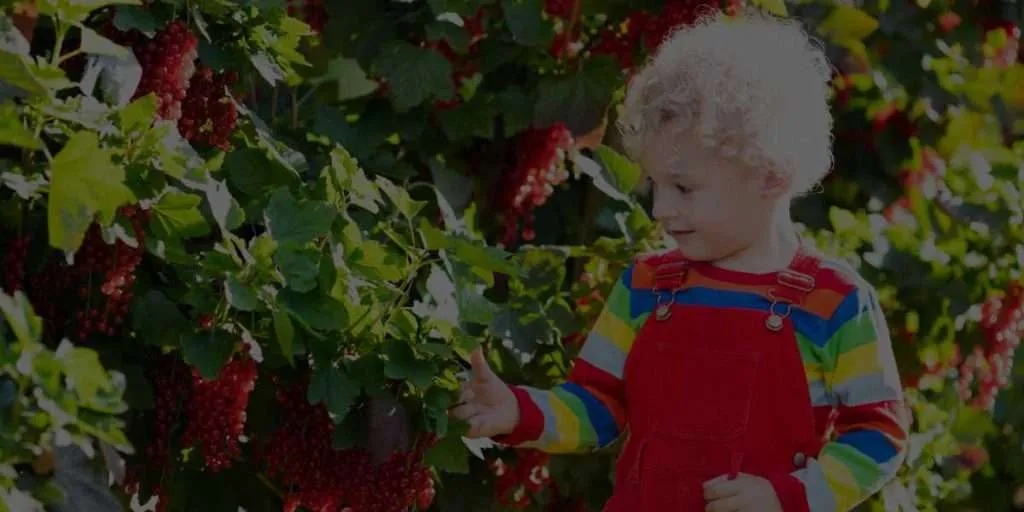
Outdoor Reading
Nestled under a tree with a storybook, the narrative comes alive differently. The gentle rustle of leaves or the distant chirp of a bird adds an auditory dimension to the reading experience.
Through stories set in nature, babies develop empathy for creatures big and small, and learn about diverse habitats and ecosystems.
Nature Hikes
Meandering trails introduce infants to a world teeming with life. From observing ant colonies to watching birds soar, every moment is a lesson in biology, physics, and ecology. Nature hikes also instill values like patience, observation, and respect for all living beings.
Music and Rhythm
Music transcends boundaries, resonating with the very core of our being. Combined with the limitless expanse of the outdoors, it becomes a powerful cognitive and emotional development tool.
Musical Jam Sessions
Imagine a gathering with simple excellent baby friendly instruments like drums, tambourines, or even makeshift shakers. Babies can experiment with sounds, learn about rhythm, and express themselves freely with toy instruments.
A University of Southern California study found that music training accelerates brain development in children, enhancing areas responsible for language development, sound processing, and reading skills.
Dancing Outdoors
The freedom of dancing under the open sky is unparalleled. Moving to tunes, whether the strumming of a guitar or nature’s symphony, is liberating and developmental. And an outdoor dance party will be great for you as well! Just try to do it in warm weather and remember sun protection!
As the NIU Child Development Center highlighted, music and movement enhance motor skills, balance, and coordination while fostering creativity.
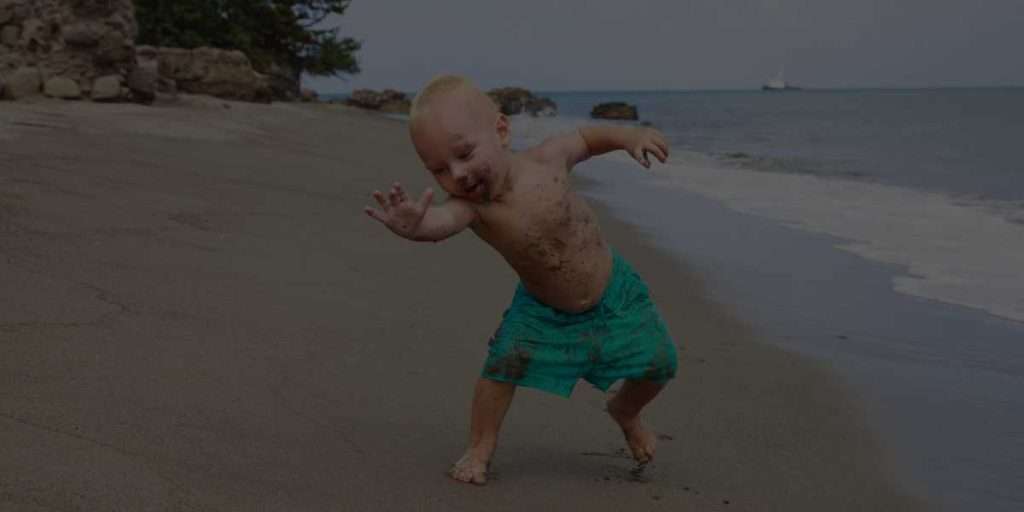
Classic Outdoor Joys
Some activities are timeless, their charm passed down from generation to generation. These classic outdoor joys entertain and forge memories that last a lifetime.
Soaring on Swings
The simple pleasure of swinging, feeling the wind rush past, and the exhilarating sensation of flight is unmatched. For infants, swinging strengthens their core muscles and gives them an early understanding of motion and gravity.
Playground Visits
Playgrounds provide opportunities for a wide range of movement and stimulation. Slides teach about gravity, sandboxes encourage tactile exploration, and climbing structures enhance motor skills.
Playing on the playground helps with more than physical development. They’re also hubs of social interaction and learning. Playing, sharing, and interacting with peers helps develop social skills and emotional intelligence.
Parents play a vital role in ensuring a safe playground experience for their children. They should inspect all playground equipment sharp edges, hot sections, litter, and other potential hazards. Close supervision during play is also important.
Family Picnics
Family picnics can provide numerous benefits for infants, both physical and emotional. Exposure to the outdoors and the natural world promotes sensory development and helps them connect with nature.
Picnics create a warm and inclusive atmosphere, fostering strong family bonds and providing infants with a sense of security and belonging that is essential for their emotional and social development.
Renee, a new mom: “Outdoor picnics have become our favorite family activity. My son is more alert and engaged outside, playing with the grass or picnic blanket or watching the clouds move. It’s a joy to see him connect with nature.”
Engaging the Senses without Overstimulation: A Balance Between Exploration and Comfort
The world can be a sensory feast for an infant, especially when set against the vibrant backdrop of the outdoors. Birds chirping, leaves rustling, and the gentle caress of the wind—each offers an opportunity for sensory exploration.
However, all that new information can feel overwhelming for little ones. Here’s how you can help your baby relish the sensory delights of nature without tipping the scales into overstimulation.
Gradual Introduction
Like dipping toes into water before a swim, introduce your baby to the outdoors bit by bit. Start with shorter durations, allowing them to acclimate to the new environment.
For instance, a quick stroll in the garden can precede a visit to a bustling park.
Watch for Cues
Babies have their way of communicating discomfort. It could be through fussiness, rubbing their eyes, or even turning their head away.
Recognize these signals and give them a break, retreating to a quieter or more familiar setting if needed.
Soft Sounds
Nature’s soundtrack can be both soothing and intriguing. The distant gurgle of a stream or the soft cooing of a dove can engage without overwhelming.
Choose locations where sounds are mellow rather than jarring. Avoid places with loud noises, be it the hustle of traffic or the clamor of a busy playground.
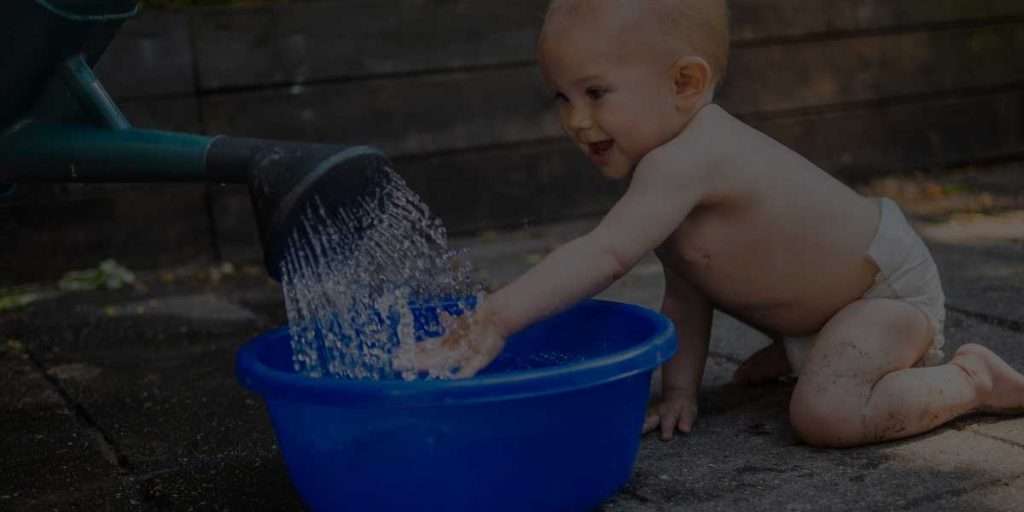
Tactile Exploration with Limits
Textures are fascinating to little fingers, be it the silkiness of flower petals or the roughness of tree bark.
However, ensure this tactile exploration is supervised. Ensure that curious hands don’t pick up something harmful or put small objects in their mouths.
Filtered Light
Bright sunlight can be glaring to an infant’s sensitive eyes. Choose times of the day when the sun is gentler, such as early mornings or late afternoons.
You can also seek shaded areas like beneath trees or canopies, which offer dappled light – a visual treat without being too intense.
Introduce Nature’s Palette Gradually
The kaleidoscope of colors outdoors is vast. Start with settings that have a more monochromatic palette, like a sandy beach or a snow-covered park.
You can venture into more colorful terrains like flower gardens as your baby gets accustomed.
Controlled Fragrance Exposure
While the fragrance of blooming flowers can be delightful, it’s best not to overwhelm a baby’s developing olfactory senses.
Stick to areas where scents are subtle. If you’re introducing them to a new fragrance, like that of a pine forest, ensure it’s not combined with other strong stimuli.

Safe Space
Amidst exploration, have a designated ‘safe space’ where your baby can retreat. This could be a blanket laid out on the grass or even the familiar confines of their stroller.
It acts as a sensory break, offering comfort and familiarity.
Drawing insights from NIU Child Development Center and the University of Southern California research, it’s evident that sensory experiences significantly influence a child’s development.
However, the art lies in offering these experiences in measured doses, ensuring they intrigue, educate, and comfort, rather than overwhelm.

